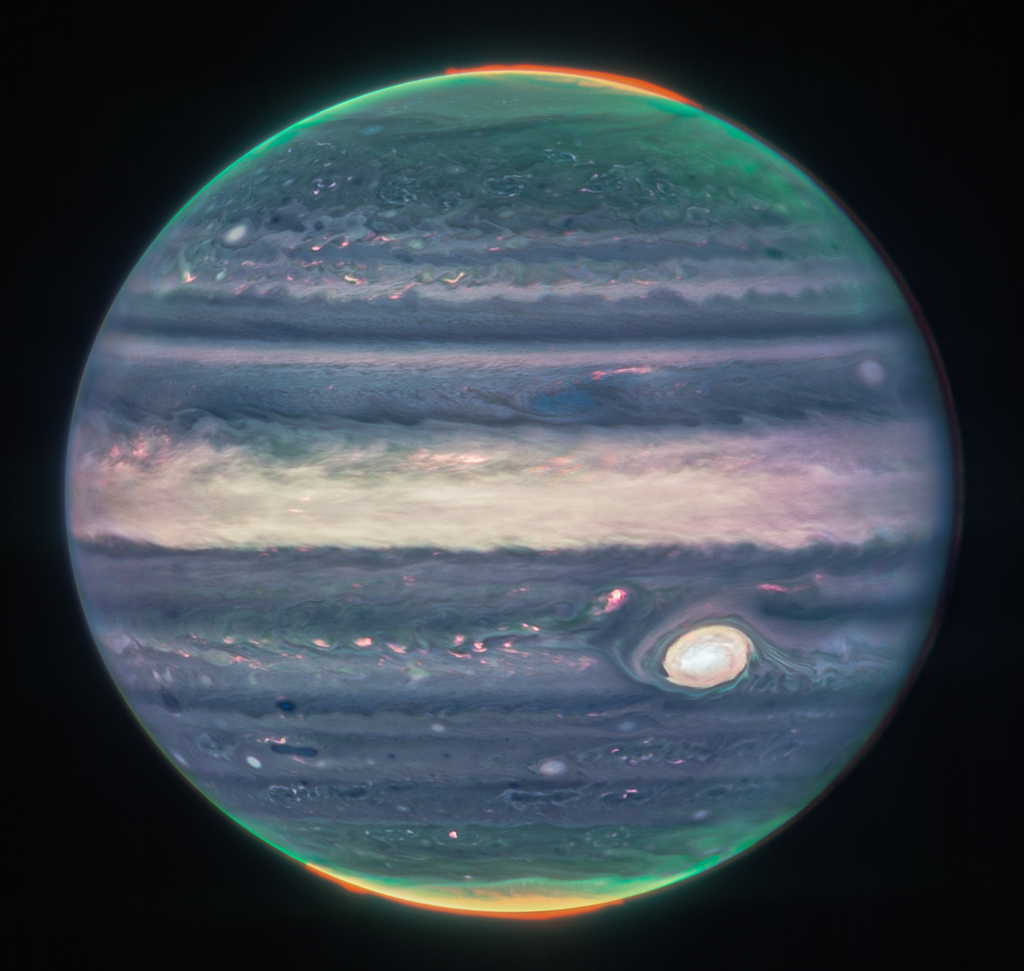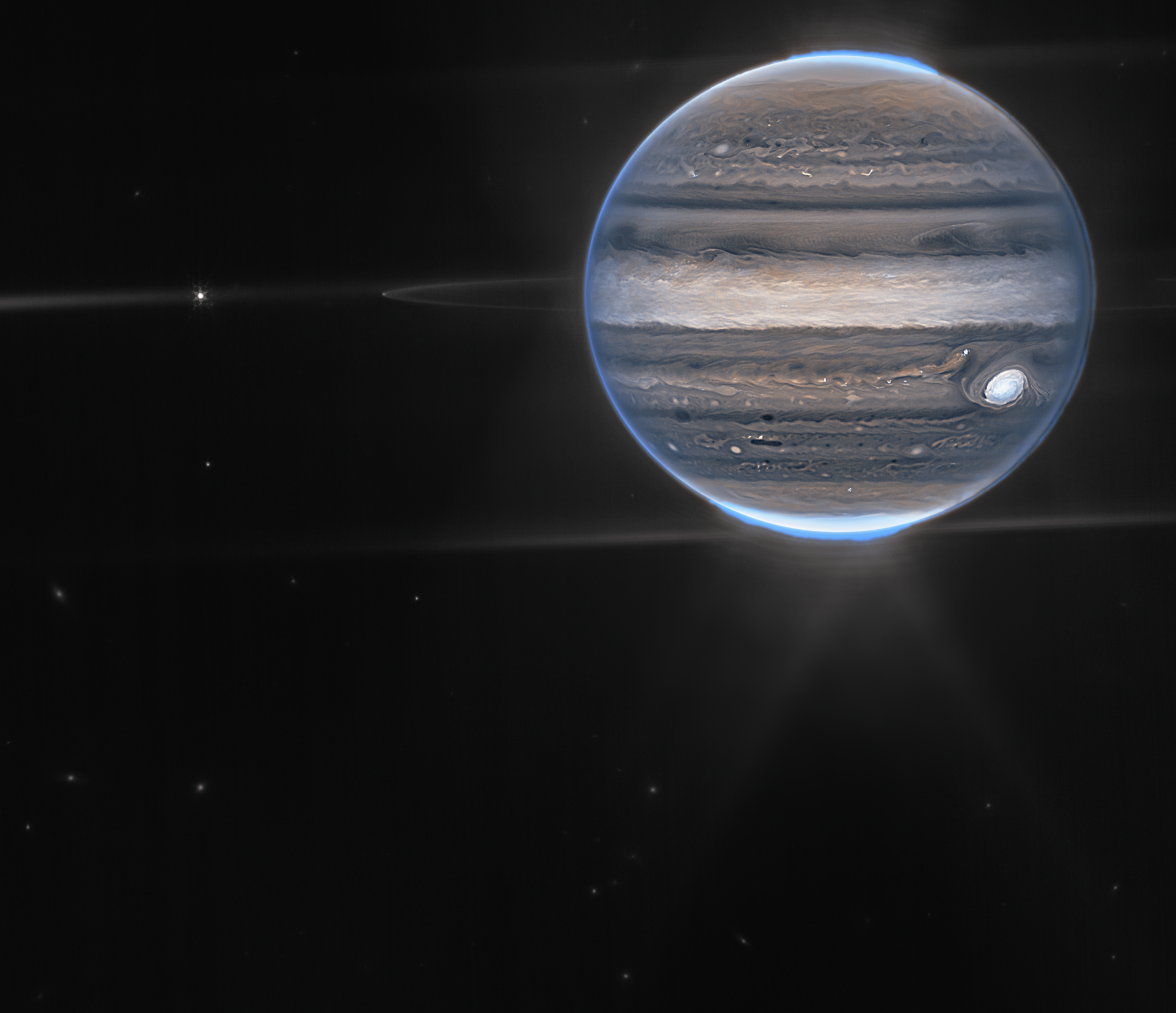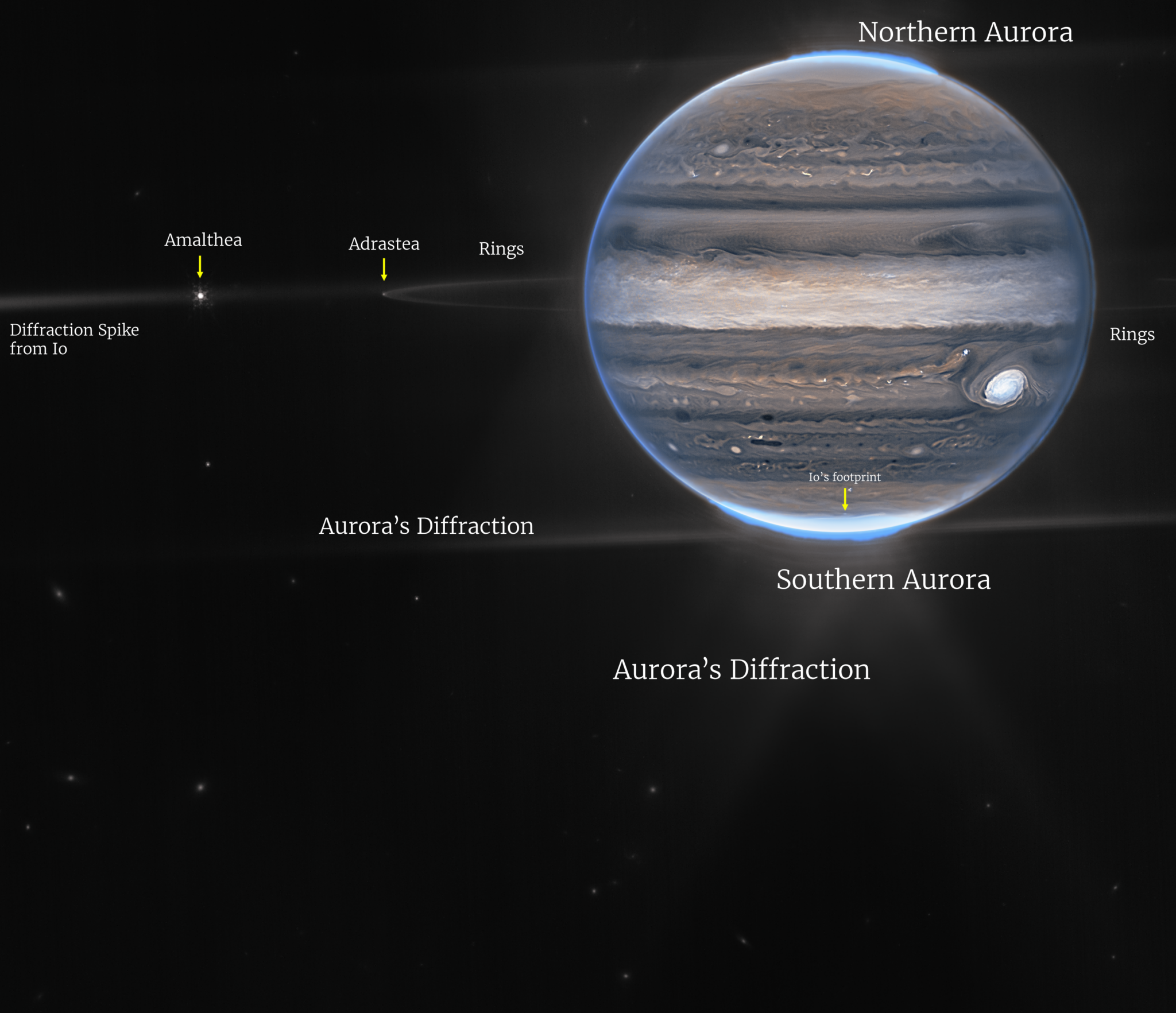Scientists working with the James Webb Space Telescope (JWST) have published a striking new image of Jupiter. It shows many amazing details of the largest planet in the Solar System, including giant storms, auroras, its moons and rings.
Anatomy of Jupiter’s atmosphere
In total, JWST made two portraits of Jupiter. Only the planet is depicted on one, and its surroundings are also visible on the other. They were made up of frames captured by the NIRCam near-infrared camera, which is equipped with a number of filters tuned to different wavelengths. Since infrared radiation is invisible to the human eye, when converting data to the visible spectrum, astronomers adhere to the rule of assigning blue color to shorter wavelengths, and red color to the longest waves.

In the case of images of Jupiter, the red color corresponds to the auroras at its poles, as well as sunlight reflected from the lower edge of clouds and haze in the upper atmosphere. The yellow and green colors correspond to the haze around the north and south poles. The blue color corresponds to the light reflected by the main cloud cover of the planet.
A single portrait of Jupiter from JWST demonstrates many curious processes taking place in the Jovian atmosphere. The higher the cloud or vortex is, the more sunlight they reflect and, accordingly, the brighter they seem. That is why the famous Big Red Spot in the picture looks white. As for the numerous bright spots and stripes, they appear to represent very high cloud tops in convective storms.
Moons and rings of Jupiter
A wide-angle portrait of Jupiter shows the immediate surroundings of the planet. We can see its rings. They are very dim (a million times dimmer than Saturn’s rings) and consist mainly of dust.


In the photo, you can also see two moons of Jupiter — the 200-kilometer-long Amalthea and the 20-kilometer-long Adrastea. Blurred spots in the far background are distant background galaxies. The diffraction rays coming from the Io moon are also visible in the picture (it doesn’t get into the frame). This is an optical effect arising from the design features of reflector telescopes.
Earlier we talked about how JWST got the most detailed photo of a galaxy with a double bar.
According to https://blogs.nasa.gov
Follow us on Twitter to get the most interesting space news in time
https://twitter.com/ust_magazine

